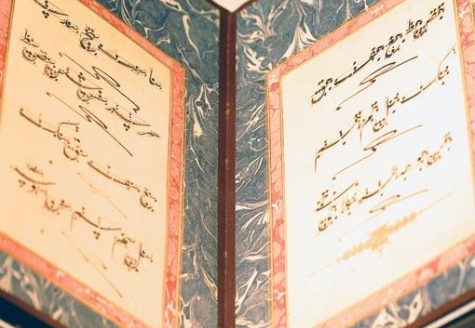Yemen Islamic Calligraphy versus Digital Age
Islamic Calligraphy has always been an art that has been passed down the generation, carrying many definitions of life, culture, politics, and most importantly love.
Islamic calligraphy has always been an art that has been passed down from generation to generation: it carries many life meanings, cultures, politics, loves, and most importantly, the words of Allah. Quran is written in Islamic calligraphy and passed down from generation to generation.
But today, calligraphy is gaining ground in the world of advertising.
Calligraphy is gradually blending with computer graphics design to create a new generation of advertising based on the beauty of Islamic calligraphy. The designers have started to include forms of Islamic or Arabic calligraphy in their designs.
They try to unveil the beauty of Islamic calligraphy to cultivated society as well as to general public. You can find such blended artworks at Abu Salah’s Bookshop, for example.
The art work was collaboration of two generations: the father is a calligrapher and the son is a computer designer. Waleed al-Ward, 16, web and graphics designer, redesigned and styled the outlook of his father’s calligraphy.
He interwove old-school calligraphy and modern digital design solutions. “I like Islamic calligraphy because it adds beauty to the design due to its distinction,” Waleed said.
He added, “it is a living art that gives life to the design. Handwriting is different from computer fonts and anyone can see the difference.”
According to Waleed, handwriting resurrects artistic design especially if design is related to culture. “Sometime the customer does not just ask for an Islamic calligraphy in the design; rather they want it for a website, advertisement or even a logo.
I add the handwriting automatically to design samples and show it to them, particularly if the business is in the field of traditional, classic culture, because it gives the impression of cultural sophistication, typical of Arab civilization.” He also complained that some customers“ requests are almost impossible to accomplish, which is the biggest challenge for him.
“It could be challenging to meet the customers' expectations,” said Waleed. “Sometimes they ask for more and more elements, that could ruin the design and my duty is to warn them it could be inappropriate or does not integrate with it,” he added.
Waleed’s father, Khalid al-Ward, 39, a prominent calligraphy artist in Yemen, sees his son’s creativity in combining the art of calligraphy and design.
“Islamic calligraphy has adapted to the contemporary arts by expressing itself in advertising,” said al-Ward. He indicates, “One of the challenges that we face as calligraphy artists is the modern technology, which we adapted to it and tried to understand it”.
“The designers have started to realize that they need a unique touch in their designs”.
“Only Islamic Calligraphy can provide enough inspiration”. According to al-Ward, designers tried to search for a way that will help Arab society to appreciate the artworks; however, modern Arabs usually fall under the western influence and adopt the western lifestyle.
“Not all calligraphy artists could adapt to the modernization. Publicity and advertising are not the only beneficiaries from Islamic calligraphy but it was a good move to introduce Islamic calligraphy,” said al-Ward.
Al-Ward has two sons: one of them is also a designer but the other is following his father footsteps. “My younger son, Waseem, 10, has improved his calligraphy skills and I think that he will be an expert in less than one decade.
The two boys have been largely influenced by their father because they have lived in a house that was full with their father’s passion in calligraphy. This had urged them to learn and appreciate the Islamic Calligraphy.
Their father wished that they could follow the path they wanted and he assured that he would always support them wishing that they developed their talents. Waleed showed interest in computer graphic design and started working as a designer three years ago when he was only thirteen. Since then he has improved his competence in the field.
Today he is a web designer and carries out many design projects that come through acquaintances. According to Waleed, some designs are targeting the West and English-speaking customers; therefore, he would not use Islamic calligraphy in this design.
”I cannot express my feelings in all the designs because I take into account the message my customer wants to convey”, said Waleed. Walled’s father disagrees with him in this matter. Al-Ward assured that the subject does not matter since in Islamic calligraphy there is always a way.
“If you express some background about the Arab culture in a website with an Arab origin it would not hurt even if the website is addressed to western society,” he added.
Waleed explained more, “The website might represent a technology aspect, in this field it might not be appropriated to add an artistic form of Islamic calligraphy.” According to Waleed, the design should get approval from three parties “the Client, the Designer, and the Target Audience”.
 Islamic calligraphy adds beauty to the design due to its distinction
Islamic calligraphy adds beauty to the design due to its distinctionSource: Yemen Observer
Calligraphy is the art of both ideal writing and an ideal soul.



